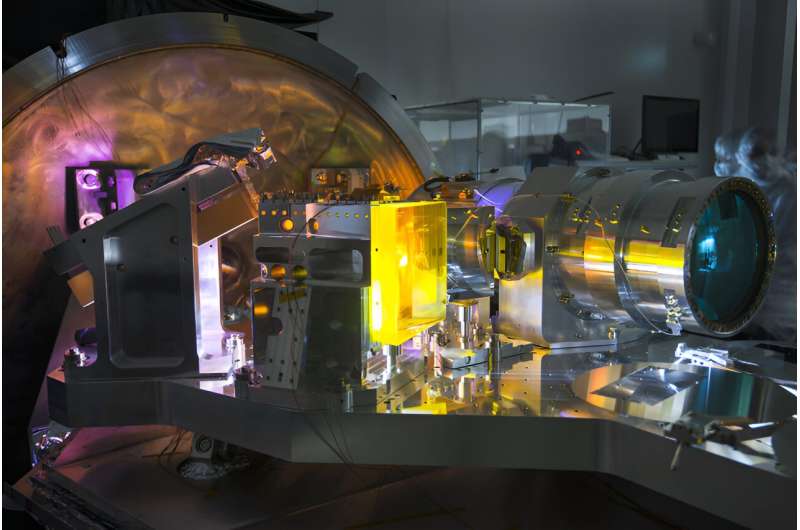This article has been reviewed according to Science X's editorial process and policies. Editors have highlighted the following attributes while ensuring the content's credibility:
fact-checked
peer-reviewed publication
proofread
Astronomers show magnetic field of a red dwarf star may be approaching polar reversal

The 11-year solar activity cycle is a well-known phenomenon, during which the intensity of the sun's magnetic field varies and its polarities reverse. Over the past 30 years, astronomers have identified similar behavior in several sun-like stars. But until now, no reversal of magnetic polarities has been observed for their cooler counterparts, the red dwarf stars.
Now, an international team including scientists from the CNRS (including IRAP) has shown that the magnetic field of the extremely active red dwarf AD Leonis may be approaching polar reversal. These data were obtained using the ESPaDOnS (1) and SPIRou (2) instruments at the Canada-France-Hawaii Telescope (CFHT), and NARVAL (3) at the Bernard Lyot Telescope (BLT). The findings are published in the journal Astronomy & Astrophysics.
AD Leonis is a notoriously active red dwarf star, with a magnetic field about 1,000 times stronger than that of the sun. Although evidence of activity cycles exists, it is not yet known whether red dwarfs can exhibit magnetic cycles.
AD Leonis has been observed since 2006 with the ESPaDOnS and NARVAL instruments, and since 2019 with SPIRou. The study, led by IRAP Ph.D. student Stefano Bellotti, shows that not only does the magnetic field intensity decrease continuously over this period, but also that the star's magnetic poles have begun to flip. Although polarities were not reversed during the SPIRou observations, these results indicate that red dwarfs like AD Leonis may undergo magnetic cycles, like the sun.
This result provides a better understanding of the magnetic field generation of stars colder than the sun. Furthermore, the study of the magnetic field of red dwarfs—prime targets for the detection of rocky, Earth-like exoplanets—is essential for understanding the space environment in which rocky exoplanets orbit.
More information: S. Bellotti et al, Monitoring the large-scale magnetic field of AD Leo with SPIRou, ESPaDOnS, and Narval, Astronomy & Astrophysics (2023). DOI: 10.1051/0004-6361/202346845
Journal information: Astronomy & Astrophysics
Provided by Astronomy & Astrophysics





















